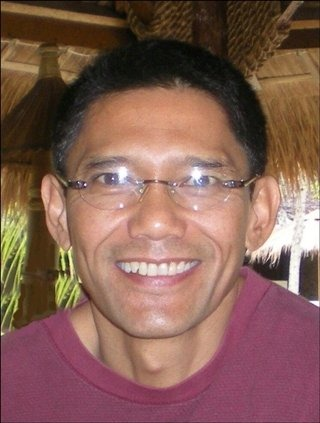IJCH - Inside JaiChai's Head (Meaning: My Warped, Personal Opinions and Musings)
From the Author:
Salutations.
I am JaiChai.
And if I haven't had the pleasure of meeting you before, I'm delighted to make your acquaintance now.
I invite you to interact with everyone, learn, and have as much fun as possible!
For my returning online friends, "It's always great to see you again!"
The Red Dragon called "Pain"
In the HARVARD-YENCHING INSTITUTE WORKING PAPER SERIES - (2015) titled "THE SYMBOL OF THE DRAGON AND WAYS TO SHAPE CULTURAL IDENTITIES IN VIETNAM AND JAPAN", it states:
The main 'dragon kings' recognized in Japan includes: Sui Riu is a rain-dragon, which causes red rain, coloured by its blood when in pain...
Battling The Red Dragon
Ever since Man could feel pain, he has done everything to avoid it.
If avoiding pain was not possible, he would do anything to make it go away - or at least make the pain somewhat "tolerable"; including the creation of a myriad of pain relieving herbal formulas, special foods and concoctions that were consumed, imbibed or injected.
For example, even in Sumerian times, opium was regarded as "a gift from the Gods" because of its pain alleviating properties.
The British virtually conquered China by "force-feeding" opium to the Chinese.
In short order, China's society and economy eroded; ravaged by the huge amount of its population being opium addicts.
Then came the Opium Wars...
The Opium Wars were two wars in the mid-19th century involving China and the British Empire over the British trade of opium and China's sovereignty.
The clashes included the First Opium War (1839–1842) and the Second Opium War (1856–1860). The wars and events between them weakened the Qing dynasty and forced China to trade with the other parts of the world.
The victorious British were successful in inducing an opioid crisis in China, which seriously undermined Chinese society.
I will discuss more pain medications derived from opium soon.
But at this point, I must introduce the cousin of "The Red Dragon", the flip side of pain relief called "The White Dragon"...
The White Dragon - Addiction
The term "The White Dragon" was first used to describe crystal methamphetamine and its highly addictive nature.
It was graphically depicted in the popular "Breaking Bad" series and the movie:
"Chasing the White Dragon (2008)"
Six small town characters are trapped in the nightmare of crystal methamphetamine addiction and each must make the decision to escape the nightmare before their world implodes.
Nowadays, the White Dragon has been generalized to mean an addiction to any of several illicit drugs - especially if it can be smoked on tin foil.
The drug is heated and the user "chases" the white smoke down the aluminum tray; hence, the term "Chasing the White Dragon".
OK. Back to pain medications...
Morphine - The "Cure" for Opium Addiction
Morphine is an opiate used to relieve severe pain.
Named after Morpheus, the Greek god of dreams, morphine provides a feeling of euphoria oft-described as a dreamlike state.
The drug can be taken in the form of a tablet, syrup or injection. In some cases, morphine can even be smoked.
Morphine, derived from opium, was first marketed as the "cure" for opium addiction.
Of course, as morphine usage rose, so did morphine abuse; creating another generation of addicts.
Heroin - The "Cure" for Morphine Addiction
By the middle of the 1800s, morphine was incredibly popular in the medical world, and it wasn’t until after the Civil War that the addictive nature of the drug started to be seen. Because of the Civil War, the number of people who were exposed to morphine spiked rapidly, and unfortunately, many soldiers were addicted to the drug.
The country went through a morphine epidemic at that point, and doctors and people in the medical field were searching for ways to treat pain without the use of morphine.
Enter heroin.
Heroin was advertised as an effective pain reliever and the "cure" for morphine addiction.
In fact, initially, heroin could be purchased over the counter; while many pharmacies required a doctor's prescription for aspirin!
Of course, as heroin usage rose, so did heroin abuse; creating yet another generation of addicts.
Oxycodone - The "Cure" for Heroin Addiction
Oxycodone, sold under brand names such as Percocet and OxyContin among many others, is an opioid medication which is used for the relief of moderate to severe pain.
It is usually taken by mouth, and is available as a single-ingredient medication in immediate release and controlled release formulations.
Source
Oxycodone, the opioid that OxyContin is derived from, was developed in Germany in 1916. It was designed to be a better medication than other opioids, such as heroin, codeine, and even morphine.
In the years just before it was created, people were becoming addicted to heroin or experiencing serious side effects from abuse.
At that time, no one thought that this new drug would become one of the most widely used and abused prescription drugs of all time.
Oxycodone is twice as powerful as heroin and was touted as the best alternative for heroin; meaning, non-addictive.
Yeah right.
And shaking a plate of jello doesn't resemble a fat hooker on a cold night?
Since the majority of addicts possess a solid knowledge base in "street chemistry", they quickly learned how to bypass any "time-release" mechanisms (i.e., tablet coatings and other obstructing ingredients) to get a more immediate rush.
And of course, as oxycodone usage rose, so did oxycodone abuse; creating yet another generation of addicts.
Conclusion
Yes, it appears that Science has conquered the Red Dragon (Pain) - many times.
But, it continually loses the follow-on battle with the White Dragon (Addiction).
By JaiChai

Really Appreciate You Stopping By.
Truly hope to see you again!
About the Author -

Believing that school was too boring, he dropped out of High School early; only to earn an AA, BS and MBA in less than 4 years much later in life – while working full-time as a Navy/Marine Corps Medic.
In spite of a fear of heights and deep water, he performed high altitude, free-fall parachute jumps and hazardous diving ops in deep, open ocean water.

After 24 years of active duty, he retired in Asia.
Since then, he's been a full-time, single papa and actively pursuing his varied passions (Writing, Disruptive Technology, Computer Science and Cryptocurrency - plus more hobbies too boring or bizarre for most folk).
He lives on an island paradise with his teenage daughter, long-term girlfriend and three dogs.
![]()
